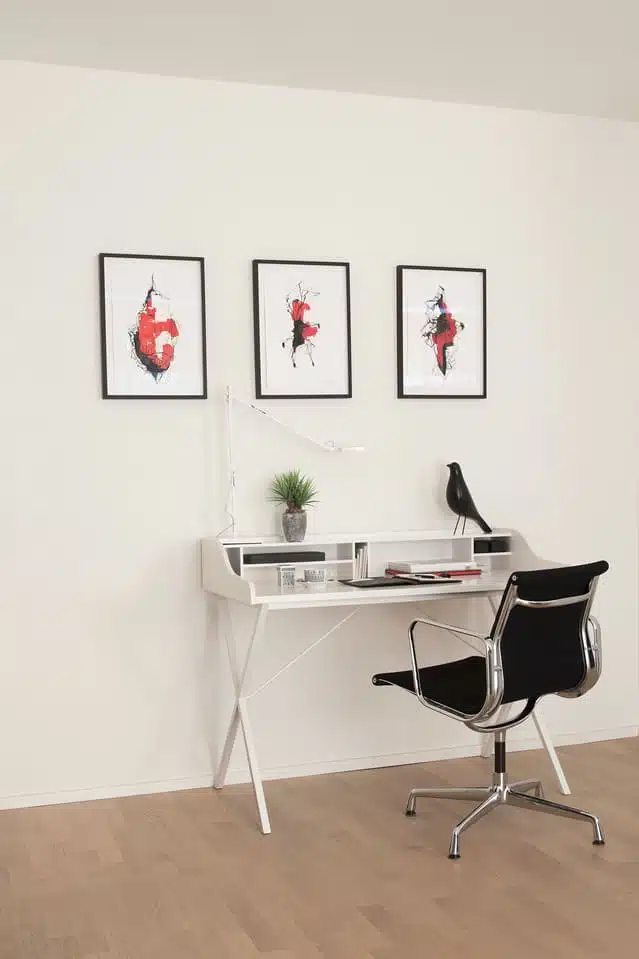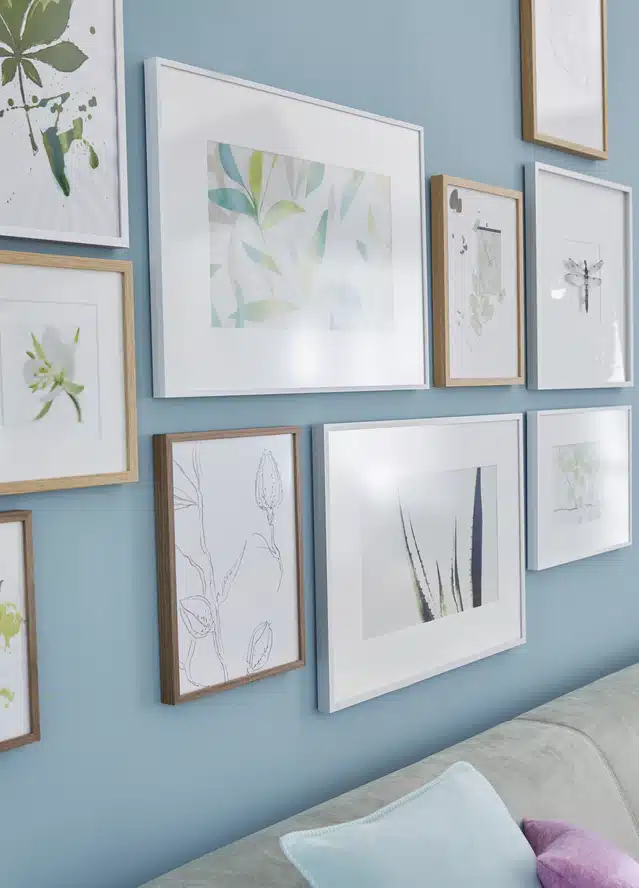A suitable place for every picture
Where and how you present your pictures is just as important as choosing the right picture frame. The framing process is only complete when the picture and frame have found their perfect place on the wall. But in order to find this place, one must first clarify some basic questions. What are the lighting conditions? How should you hang the pictures? What is the condition of the wall? These and other questions should be answered before the hanging process can begin.
WHERE? - The right place
When looking for the right place to hang photos or pictures on the wall, several factors come into play. First and foremost, the wall condition must be checked, as different hanging options are possible depending on the surface. For example, if the wall is very soft and crumbly, large and heavy pictures should be hung on two long screws with dowels to ensure a secure hold. It is also important to pay attention to the lighting conditions. If the light falls directly on the picture, for example if it is placed opposite a window, the picture can be damaged as it fades due to the direct radiation of light. Reflection is also a problem, as the image cannot be shown to its full advantage. A remedy for this is anti-reflective glass with UV protection.
The position of your pictures in the room also determines the character of the room, similar to wall colour and furniture. In this way, the pictures contribute to a cosy and homely ambience. In order to find the perfect place in the room, it is advisable to place all the pictures in question on the wall and try out different combinations. In this way you can find out which pictures go well together, how they harmonise with the rest of the room decoration and on which wall they look best. Certain viewpoints in a room are ideal for picture presentation. For example, above the bed or sofa, but also in niches or on narrow walls between doors or windows. In these places your pictures unfold the best effect. Oil paintings, for example, lend a certain weight to the room, whereas drawings tend to have a light effect and photographs a cool one. Size ratios also play a big role in this decision. For example, petite paintings should be hung above smaller pieces of furniture or in clearly defined areas of the room, otherwise they will quickly get lost in the room.

HOW? - The right way
Once you know where to hang the paintings, you quickly come to the matter of attaching them. To do this, you should consider whether you are dealing with a single picture or a group of pictures. Depending on the size, a single picture can be attached to the wall relatively easily and quickly. Hanging a group of pictures is a little more difficult.
Once you have decided which group of pictures will go where, the arranging process begins. If you have different sized pictures in the picture group, you should start with the largest picture and use this as a guide. This is because the larger a picture, the more decisive its influence on the spatial effect and the effect on the viewer.
A series of pictures or several pictures framed in the same way are often the simplest and most appealing solution in a symmetrical arrangement. A more random, flexible arrangement creates a feeling of comfortable informality. If the pictures are now re-hung from time to time, the familiar takes on a new glamour. The height of the hanging is also important. In most cases, the picture frames are hung at eye level or slightly higher. In this way, the works attract attention, but are not brushed against when passing by. In rooms where people often sit, for example in the living or dining room, the pictures can also be attached below eye level. As a rule of thumb you can remember: The higher the picture hangs, the more stern it appears, the lower, the more homely.
